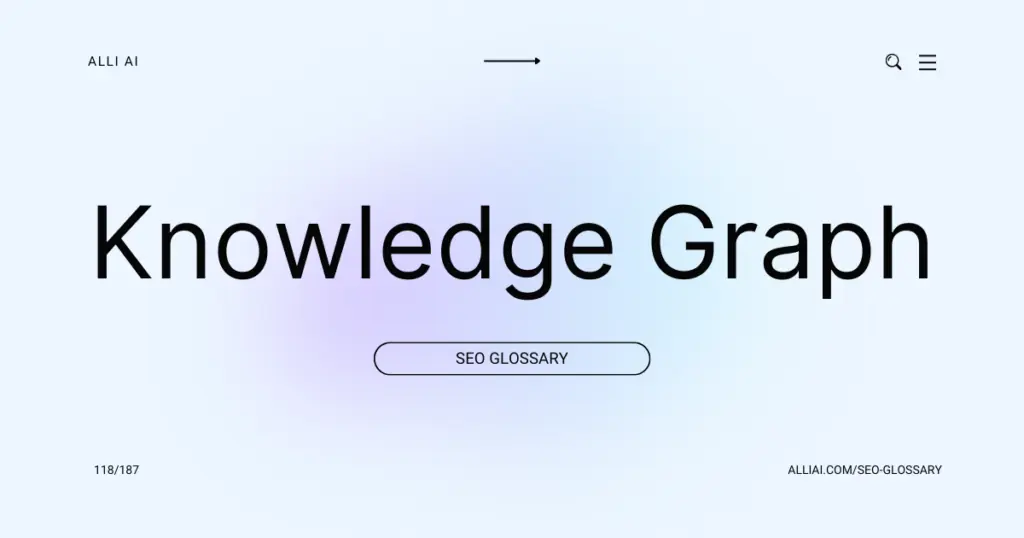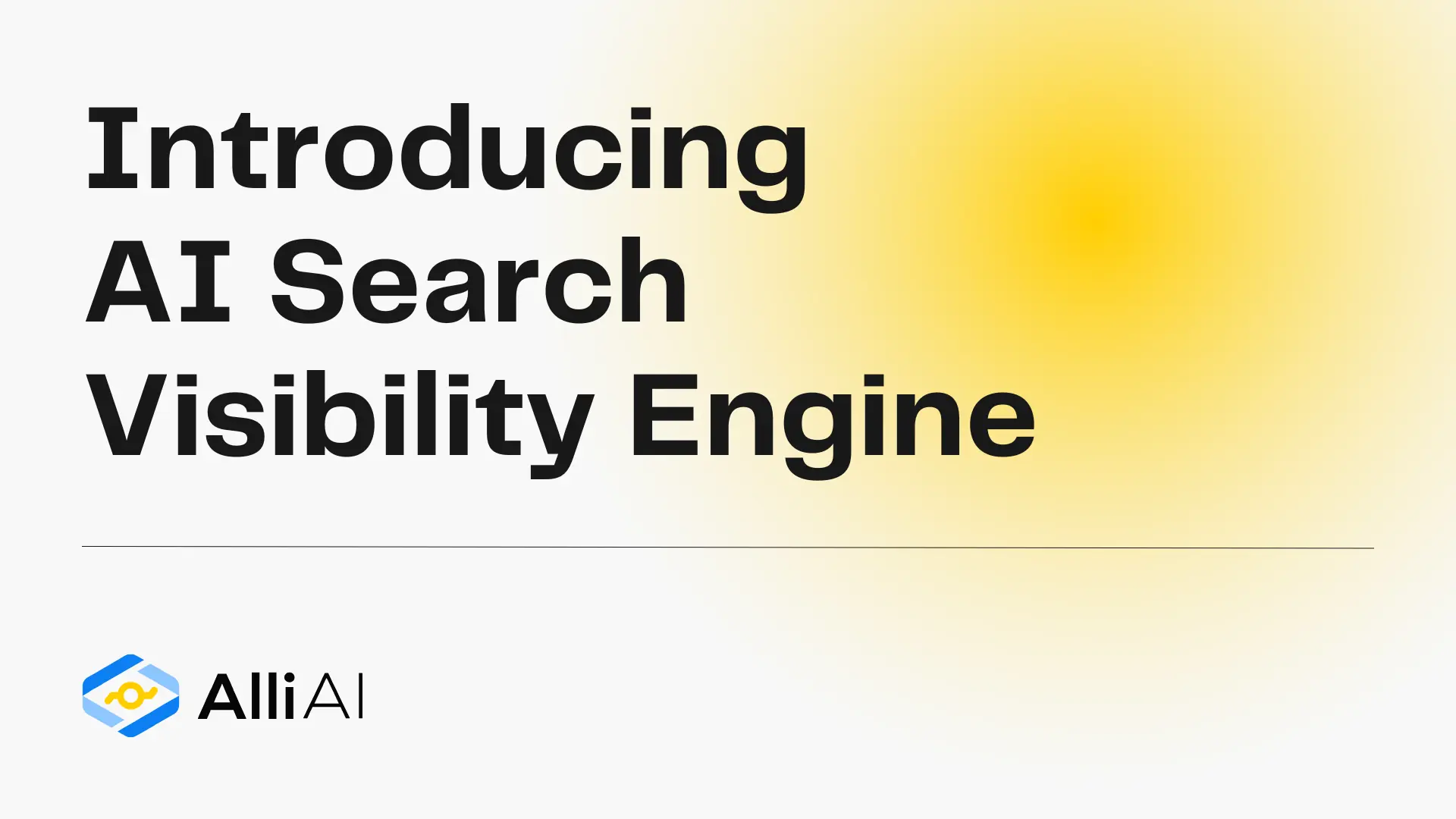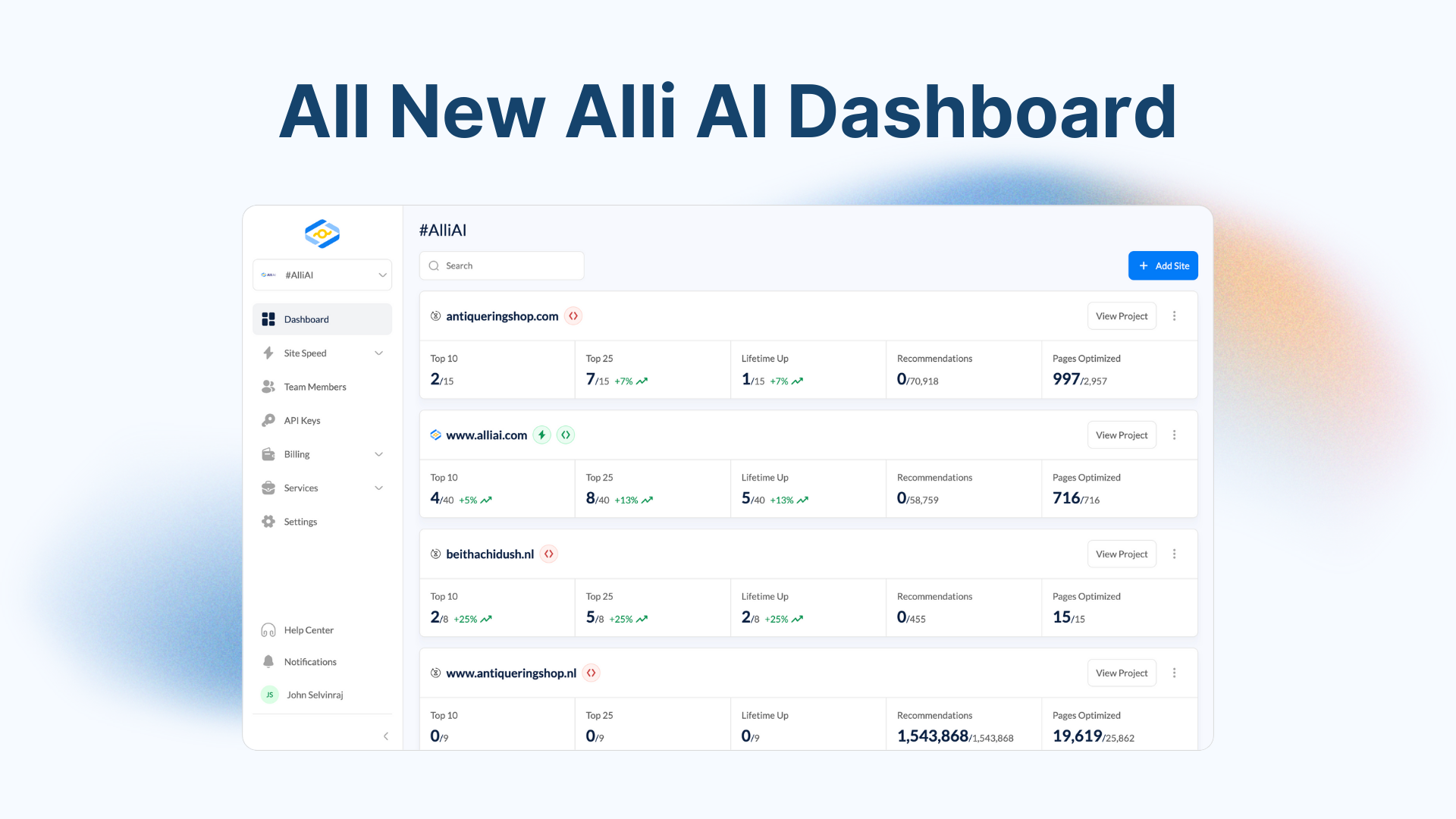What Does Knowledge Graph Mean?
The Knowledge Graph is a technology used by Google and other search engines to enhance search results by gathering and integrating information from various sources into an organized database. This information is then used to provide users with direct, factual answers and comprehensive details about their queries, helping to understand the relationships between different topics, concepts, and entities.
Where Does Knowledge Graph Fit Into The Broader SEO Landscape?
The Knowledge Graph is an AI-driven system designed by Google to enhance search results with semantically-relevant information gathered from a wide array of sources. This system helps to provide users with detailed and direct answers to their queries at the top of the search results page, which often includes facts, figures, and relationships between entities.
From an SEO perspective, the Knowledge Graph can influence visibility and click-through rates as it impacts how information is displayed in Google’s SERPs. For brands and websites, appearing in the Knowledge Graph can significantly increase trustworthiness and authority. To optimize for the Knowledge Graph, SEO strategies involve ensuring that a website’s content is well-structured, authoritative, and utilizes schema markup to enhance the understanding of content by search engines. Additionally, maintaining a strong presence across other reputable sites, like Wikipedia and industry-specific databases, can contribute to the credibility and visibility in Knowledge Graph results.
Furthermore, the optimization also involves creating content that answers questions directly related to your niche or industry and organizing website data in a way that it can be easily processed by Google’s algorithms. By doing so, there is a higher chance of being featured in the Knowledge Graph, thus improving organic search presence and potentially driving more traffic to the site.
Real Life Analogies or Metaphors to Explain Knowledge Graph
1. Library Index System: If you imagine the internet as a huge library filled with books (web pages), the Knowledge Graph functions like the library’s index system. It categorizes and connects information from various books, helping you find exactly what you’re looking for without having to read every book.
2. Spider Web: Think of a spider web, where each thread is a piece of information. The Knowledge Graph is like the points where the threads connect, linking relevant pieces of data across the web to give a comprehensive answer or insight.
3. Brain Synapses: Consider how the human brain works; neurons connect through synapses to transfer information seamlessly and quickly. Knowledge Graph operates similarly by connecting dots (data points) across the web to help generate understanding and responses.
4. Atlas and Road Map: If data scattered around the web is like numerous cities across a country, the Knowledge Graph is both the atlas and road map, providing not only the list of cities but also the best routes between them, elucidating how different points of information are interconnected.
5. Galaxy System: Just as a galaxy is formed by the gravitational forces between stars and planetary systems, the Knowledge Graph organizes and links the universe of online information through relational data, turning chaotic info into an organized system.
6. Conductor of an Orchestra: In an orchestra, the conductor ensures all sections play together in harmony. Similarly, the Knowledge Graph orchestrates various pieces of information to play together, creating a symphony of organized data.
How the Knowledge Graph Functions or is Implemented?
1. Data Collection: Google gathers data from a wide variety of sources such as websites, books, public databases (like the CIA World Factbook or Wikidata), and user-generated content. It also aggregates data from its own services like Google Books and Google Maps.
2. Entity Recognition: Utilizing Natural Language Processing (NLP), the system identifies entities (persons, places, things) within the data. This involves understanding the context in which words or phrases are used, to distinguish between entities with similar names.
3. Entity Disambiguation: To ensure the accuracy of information, the system uses disambiguation techniques to differentiate between entities with similar or identical names (e.g., distinguishing between ‘Jordan’ the country and ‘Michael Jordan’ the basketball player).
4. Relationship Mapping: The system constructs a graph that maps out how different entities are related to each other. It understands and categorizes the relationships (e.g., Barack Obama is related to the concept of ‘Presidency’ and to ‘Michelle Obama’).
5. Information Validation and Updating: Data is constantly checked and updated for accuracy. Google uses quality scores and other metrics pulled from various sources to validate the information.
6. Knowledge Integration: Information from different sources is integrated to create a comprehensive profile or summary for each entity.
7. Query Processing: When a search query is entered, the Knowledge Graph uses the mapped relationships and integrated data to produce relevant and connected information that enhances the search results, often displayed in an infobox or panel beside regular search results.
8. User Feedback and Learning: User interactions and corrections contribute to the ongoing refinement and learning, helping to improve entity recognition, disambiguation, and the overall accuracy and depth of the knowledge graph.
Impact Knowledge Graph has on SEO
The Knowledge Graph can significantly affect a website’s SEO performance and user experience in multiple ways:
1. Visibility and Click-Through Rate (CTR): Information from websites featured in the Knowledge Graph gains heightened visibility in search results, typically appearing in a prominent box or panel. This can lead to increased CTR for those websites directly linked from these panels.
2. Authority and Trust: When a website’s content is used to populate Knowledge Graph entries, it often boosts the perceived authority and trustworthiness of the website. Higher trust can contribute to better rankings over time.
3. Search Query Satisfaction: The Knowledge Graph aims to provide direct answers to user queries, which can result in users spending less time clicking through to individual websites. This might reduce overall site traffic but increase the quality of traffic (i.e., visitors with more specific interests or intentions).
4. Long-tail Keyword Opportunities: As the Knowledge Graph often answers very specific questions, it can influence how content should be structured on websites to answer similar queries. Websites optimized for these specific, often long-tail, queries may see improved rankings and capture users with specific needs.
5. Semantic Search and Contextual Understanding: The Knowledge Graph improves Google’s understanding of the context and relationships between different concepts, entities, and facts. Websites that effectively structure their data (using schemas and rich snippets) to align with this can rank better as they are easier for search engines to understand and categorize.
6. User Engagement and Interaction: Enhancements in the Knowledge Graph, such as interactive features or additional useful information (like events or profiles), can improve user engagement directly from the search results page. Websites that contribute content which engages users may benefit from indirect SEO advantages like increased brand recognition and loyalty.
Overall, while the Knowledge Graph can enhance a website’s visibility and authority, it also requires websites to focus on high-quality, well-structured content that aligns with how Google understands and connects information.
SEO Best Practices For Knowledge Graph
1. Identify Target Keywords: Research and select specific keywords relevant to your business or the topic you want to rank for in the Knowledge Graph. Use tools like Google Keyword Planner or SEMrush for this task.
2. Create High-Quality Content: Develop well-researched and informative content that addresses the keywords you’ve targeted. The content should be authoritative and provide valuable information to the audience.
3. Utilize Schema Markup: Implement structured data using Schema.org markup on your website to help Google understand the content context better. This is crucial for Knowledge Graph optimization.
4. Optimize Your Google My Business Listing: If you own a local business, ensure your Google My Business (GMB) profile is fully optimized and up-to-date. Include detailed business information, working hours, and photos.
5. Increase Brand Mentions: Boost your presence across the web through press releases, social media, guest blog posts, and partnerships. Increased visibility can lead to more brand mentions, which Google may use to populate the Knowledge Graph.
6. Build Backlinks: Secure high-quality backlinks from reputable sites within your industry. This increases your site’s authority and credibility, which is important for Knowledge Graph inclusion.
7. Engage on Social Media: Actively post and engage on social media platforms. Consistent interaction and sharing valuable content can influence your brand’s presence in the Knowledge Graph.
8. Monitor Your Online Reputation: Regularly check and manage reviews and feedback across various platforms. Respond professionally to negative reviews and encourage satisfied customers to leave positive feedback.
9. Keep Your Information Consistent: Ensure that your business name, address, and phone number (NAP) are consistent across all online platforms and listings.
10. Use Google’s Structured Data Testing Tool: Regularly test your website’s structured data using the Google Structured Data Testing Tool to ensure there are no errors in your markup.
By following these steps, you can optimize your online presence and increase the likelihood of being featured in Google’s Knowledge Graph.
Common Mistakes To Avoid
1. Inaccurate or Outdated Information:
– Regularly update your website and linked Google properties (like Google My Business) with accurate, current information.
– Periodically check the information on the Knowledge Graph and use the feedback tool to suggest corrections.
2. Lack of Brand Control:
– Ensure consistent brand messaging across all platforms (website, social media, etc.).
– Use structured data markup to help search engines understand and display desired information about your brand.
3. Neglecting Search Engine Optimization (SEO) for Knowledge Graph:
– Implement structured data (Schema.org) on your website to enhance Knowledge Graph entries.
– Optimize content for relevance and authority with regular, high-quality updates that promote user engagement.
4. Ignoring User Interaction with Knowledge Graph:
– Encourage positive reviews and ratings on Google and other platforms influenced by user-generated content.
– Respond to user reviews and questions promptly and professionally.
5. Overlooking Related Entities and Connections:
– Link your content with relevant entities and maintain a network of quality backlinks.
– Optimize for related keywords and phrases that could connect your content to established Knowledge Graph entries.
6. Focusing Solely on Google:
– Also consider how other search engines like Bing or specialized databases might interpret and display your information.
– Engage in SEO best practices that have universal benefits across various platforms, not just for Google.






